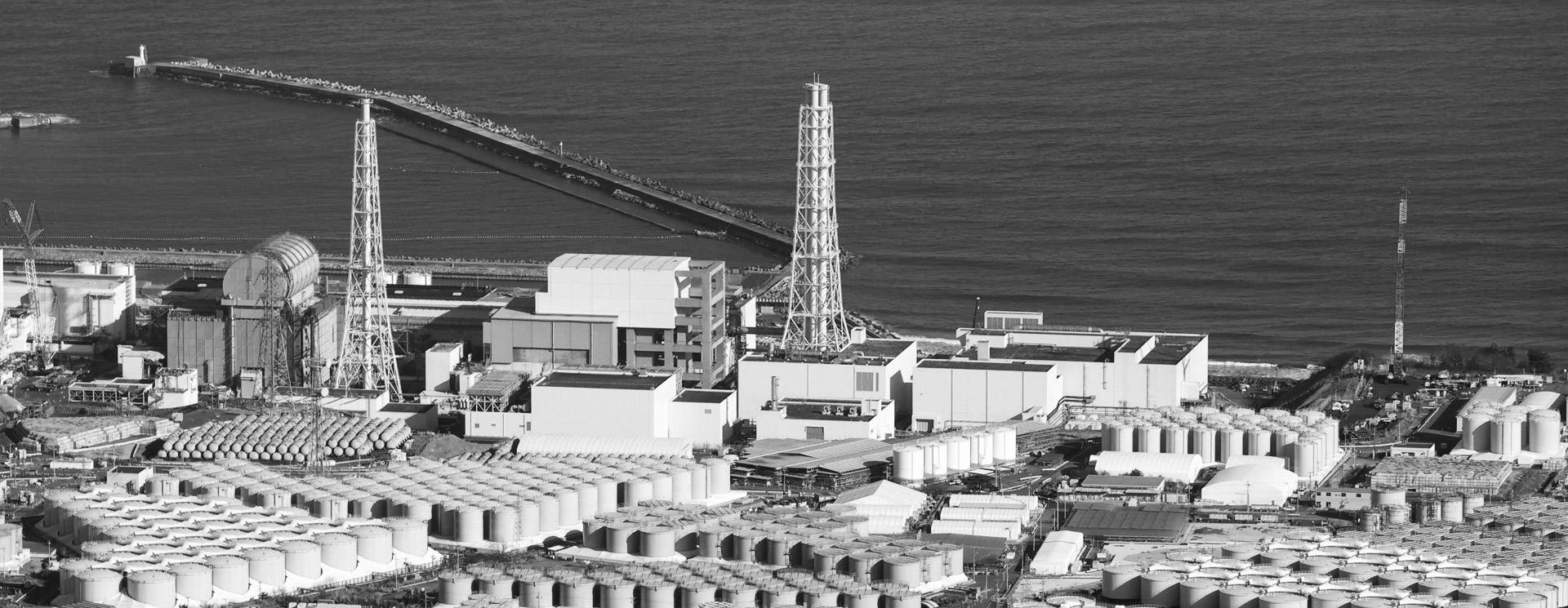
Video link:https://mp.weixin.qq.com/s/-MwZAvNhBcjpoFLO9b0C-Q
国际社会不能忽视:日本核电站存在重大风险
各位,这里是绿色江南《福岛核污染水专题访谈面对面》,我是主持人雨歌。
近期,有关日本地震的报道层出不穷,日本核电站的安全问题也引起人们的广泛关注。据了解,地震发生后,日本位于新潟县柏崎刈羽核电站,检测到核泄漏状况。石川县志贺核电站也出现乏燃料池中的冷却用水被震出的情况。因此,对于日本核电站风险是否可控,福岛核电站事故是否会再次重演,成为国际社会无法忽视的问题。今天,我们邀请到绿色江南主任方应君先生来谈谈他的看法。
日本作为全世界核电站最为密集的国家之一,全国共有54座核反应堆,可运行的核反应堆数量为33座,位居全球第五名。而日本核能发电起步较早,从上世纪60年代就开始建设核电站,如发生核事故的福岛第一核电站首个机组于1971年开始运转,福井县美滨核电站3号机组于1976年12月启动运转,至今服役长达47年。
众所周知,日本列岛地处亚欧板块和太平洋板块的交界地带,地壳运动比较活跃,极易产生地震、海啸等自然灾害。据日本气象厅观测,能登半岛地区地震活动频繁,2024年1月1号至15号共观测到1400多次有感地震。
据报道,柏崎刈羽核电站就曾在2007年7月发生的地震中,因发生核泄漏被关闭数月。后来又因人为安全问题被原子力规制委员会禁止运行。直到去年年底,该核电站的禁止运转命令才解除。但在2024年的地震中又出现带放射性物质的冷却水溢出的情况。
受福岛核事故的影响,日本曾一度关停国内所有核电站,但受能源紧缺等其他影响,日本选择逐步恢复核电站的运营。报道称,2022年日本就重启了10座核反应堆,计划到2030年,重启27座,并进一步延长之前建设的核电机组运行寿命。2022年日本首相岸田文雄也表示,日本正在进入核能战略新阶段,将重启更多闲置核电站。
2023年重新启用的高浜发电所1号机组作为日本最老的核反应堆发电机组,在最近的巡检中,发现其涡轮厂房内辅助供水的水泵附近的管道有蒸汽泄漏。更换水泵后,泄露的冷却水却比平时的多。
计划重启的志贺核电站因在地震中变压器受损,只能依靠应急柴油发电机从外部获得电力。但在试运行过程中,其1号机组的一台柴油应急发电机又出现自动停止运行的情况,停机原因仍在调查中。
由此可以看出,日本核电站的抗灾能力、相关设备的正常运行能力等均存在不确定性。且资料显示,日本所有核电站均位于沿海地区,因此一旦发生地震,2011年福岛核电站的事故也极有可能再度重演。而日本政府及核电站的运行企业还曾反复出现数据造假、事故瞒报的严重情况,这大大加剧了这些核电站出现核事故的可能性,这让日本民众及国际社会更加担忧日本核电站的安全问题。
因此,为了保障全人类的身体健康、保护我们的海洋生态环境和我们赖以生存的星球,日本政府应重新评估谨慎重启核电站的运营,积极做好风险应急预案并严格执行,也应积极改革电力系统,寻求替代性能源,并妥善处置核污染水,做一个负责任的国家。绿色江南将持续关注福岛核污染水。
The international community cannot ignore the fact that there is a significant risk to Japan's nuclear power plants
Ladies and gentlemen, this is Lvse Jiangnan's "Fukushima Nuclear Contaminated Water Special Interview Face-to-face", and I am the compere YuGe. Recently, there have been many reports about earthquakes in Japan, and the safety of Japan's nuclear power plants has also attracted widespread attention. It is understood that after the earthquake, Japan located in Niigata Prefecture Kashiwazaki Kariba Nuclear Power Plant, nuclear leakage was detected. At the Shiga Nuclear Power Plant in Ishikawa Prefecture, cooling water from the spent fuel pool was shaken out. Therefore, whether the risks of Japan's nuclear power plants are controllable and whether the Fukushima nuclear power plant accident will be repeated have become issues that cannot be ignored by the international community. Today, we have invited Mr. Fang Yingjun, Director of Lvse Jiangnan, to talk about his views.
Japan is one of the countries with the highest concentration of nuclear power plants in the world, with a total of 54 nuclear reactors in the country, and the number of operating nuclear reactors is 33, ranking fifth in the world. For example, the first unit of the Fukushima Daiichi Nuclear Power Plant in 1971, which had a nuclear accident, and the No. 3 unit of the Mihama Nuclear Power Plant in Fukui Prefecture started operation in December 1976 and has been in service for 47 years.
As we all know, the Japanese archipelago is located at the junction of the Eurasian plate and the Pacific plate, and the earth's crust is relatively active, which is very prone to natural disasters such as earthquakes and tsunamis. According to the Japan Meteorological Agency, seismic activity is frequent in the Noto Peninsula area, with more than 1,400 felt earthquakes observed from January 1 to 15, 2024.
According to reports, the Kashiwazaki Kariba Nuclear Power Plant was shut down for several months due to a nuclear leak in the July 2007 earthquake. Later, it was banned by the NRA due to human safety concerns. It was not until the end of last year that the ban on the plant's operations was lifted. However, in the 2024 earthquake, cooling water with radioactive materials spilled.
Due to the Fukushima nuclear accident, Japan once shut down all nuclear power plants in the country, but due to other effects such as energy shortages, Japan chose to gradually resume the operation of nuclear power plants. According to the report, Japan restarted 10 nuclear reactors in 2022, and plans to restart 27 by 2030, and further extend the operating life of the previously built nuclear power units. In 2022, Japanese Prime Minister Fumio Kishida also said that Japan is entering a new phase of its nuclear energy strategy and will restart more idle nuclear power plants.
The Takahama Power Plant Unit 1, Japan's oldest nuclear reactor generating unit, which was reopened in 2023, discovered a steam leak in the pipes near the water pump for auxiliary water supply in its turbine plant during a recent inspection. After replacing the water pump, there was more cooling water leaking than usual.
The Shiga nuclear power plant, which was scheduled to restart, had to rely on emergency diesel generators to obtain external power due to damage to its transformers in the earthquake. However, during the trial operation, one of the diesel emergency generators of Unit 1 of its unit automatically stopped running, and the cause of the shutdown is still under investigation.
It can be seen that there are uncertainties about the ability of Japan's nuclear power plants to withstand disasters and the ability to operate related equipment. In addition, all nuclear power plants in Japan are located along the coast, so in the event of an earthquake, there is a high risk that the Fukushima nuclear power plant accident in 2011 will be repeated. The Japanese government and the operators of nuclear power plants have repeatedly falsified data and concealed accidents, which has greatly exacerbated the possibility of nuclear accidents at these nuclear power plants, which has made the Japanese people and the international community more worried about the safety of nuclear power plants in Japan.
Therefore, in order to protect the health of all mankind and protect our marine ecological environment and the planet on which we live, the Japanese government should reassess and prudently restart the operation of nuclear power plants, actively prepare and strictly implement risk contingency plans, actively reform the power system, seek alternative energy sources, and properly dispose of nuclear-contaminated water, so as to be a responsible country. Lvse Jiangnan will continue to pay attention to the nuclear contaminated water in Fukushima.
国際社会は無視できない―‐日本の原発には大きなリスクがある
皆さん、ここは緑色江南「福島原発汚染水特集」対面インタビュー、私は司会の雨歌です。
最近、日本の地震に関する報道が相次ぎ、日本の原子力発電所の安全性が広く注目されています。新潟県にある柏崎刈羽原子力発電所では地震後、核燃料が漏れる事態が発生しました。石川県の志賀原子力発電所でも、使用済み燃料プールから冷却水が振り出される事態が発生しました。従って、国際社会は、日本の原発のリスクはコントロール可能なのか、福島の事故は再び起こるのかという問題を無視するわけにはいかないです。本日は、緑色江南の創設者の方応君主任をお招きし、ご意見を伺います。
日本は世界で最も原子力発電所が集中している国の一つとして、国内に合計54基の原子炉があり、稼働中の原子炉数は33基で世界第5位です。そして日本の原子力発電は早くから始まっており、1960年代には原子力発電所の建設が始まりました。例えば、原発事故を起こした福島第一原子力発電所の1号機は1971年に運転を開始し、福井県の美浜原発3号機は1976年12月に運転を開始し、47年間稼働しています。
日本列島はアジア・ヨーロッパプレートと太平洋プレートの接合点に位置し、地殻変動が比較的活発で、地震や津波などの自然災害が発生しやすいことはよく知られています。日本気象庁の観測によると、能登半島地域では地震が多発しており、2024年1月1日から15日までに観測された有感地震は1,400回を超えています。
柏崎刈羽原子力発電所は、2007年7月の震災時、核燃料漏れのため数ヶ月間停止したと報道されました。その後、人為的な安全上の問題により、原子力規制委員会によって運転が禁止されました。運転禁止命令が解除されたのは昨年末のことですが、2024年の震災では、放射性物質を含んだ冷却水があふれ出ました。
福島原発事故の結果、日本は一度国内のすべての原子力発電所を停止させたが、エネルギー不足などの影響もあり、徐々に原子力発電所の運転を再開することを選択しました。報道によれば、日本は2022年だけで10基の原発を再稼働させ、2030年までに27基を再稼働させ、すでに建設された原発の運転期間をさらに延長する計画があります。2022年、岸田文雄首相も、日本は原子力戦略の新たな段階に入り、休止中の原発をさらに再稼働させると述べました。
2023年に再稼働した高浜発電所1号機(日本最古の原子炉発電設備)の最近の点検で、タービンプラントに補助水を供給するポンプ付近の配管から蒸気が漏れていることが判明しました。ポンプを交換したところ、通常より多くの冷却水が漏れていました。
再稼働が予定されている志賀原発は、震災で変圧器が損傷したため、非常用ディーゼル発電機による外部からの電力供給に頼らざるを得なかったです。しかし、試験運転中に同原発1号機の非常用ディーゼル発電機1台が自動停止し、現在も原因究明中でした。
日本の原子力発電所の耐災害性や関連設備の正常な稼働に不安があることがわかりました。また、日本の原発はすべて沿岸部に立地しているため、地震が発生した場合、2011年の福島原発事故のような事態が再び起こる可能性が高いという情報もある。日本政府と原発事業者は、データの改ざんや事故の過少報告を繰り返しており、これが原発事故の可能性を高めています。このことは、原発事故の可能性を大幅に高め、日本国民と国際社会が日本の原発の安全性をさらに懸念するようになりました。
したがって、全人類の健康を守り、海洋生態系と私たちが依存している地球を守るために、日本政府は慎重な原発再稼働を見直すべきです。また、電力システムの改革、代替エネルギーの模索、原子力汚染水の適切な処理など、責任ある国として積極的に取り組んでください。緑色江南は、今後も福島原発の汚染水の進展を注目していきます。
Content source: Lvse Jiangnan WeChat public account
